When the Redmi TV was released last year, the large 70-inch size immediately reflected the trend of the TV industry today-the bigger the TV, the cooler it becomes.
At this point, the television industry and the mobile phone industry have reached an agreement on the way forward. When the screen size of the full-screen mobile phone reached the limit of 7 inches, the limit size of Xiaomi TV also reached 75 inches.
On November 5 last year, the Xiaomi TV 5 series was officially released, but at that time everyone focused on the 100-megapixel CC9 Pro. The Xiaomi TV 5 series was relatively not so dazzling.
On the one hand, this is because mobile phones are indeed a market with a higher degree of attention. Mastering mobile phones will master the entrance of almost all smart terminals. On the other hand, because Xiaomi is the undisputed number one in the Internet TV market, shipments in 2019 have reached unprecedented levels of tens of millions.

75 inches “huge”, more “heavy” than expected
The 75-inch Xiaomi Mi 5 Pro is not only Xiaomi’s most expensive TV, but also the largest.
This huge one is heavier than I originally thought, due to the epidemicThe reason is that the property downstairs of the company does not allow the logistics brother to deliver goods upstairs, so I was dragging a TV with a wooden stand alone into the elevator, and then dragging it to the office step by step.
I have known for myself that 75 inches is basically the largest size that an ordinary elevator can accommodate. I even once suspected that I might not be able to get in the elevator. And when you pull out the elevator without a trolley, if you are on the scene, you will definitely see me with a young, poor and helpless face.
During the installation process, I also found some ideas that were incorrectly estimated. For example, I originally wanted to use a table for placement, but found that the width between the left and right brackets was more than 1.6 meters, and the length of an ordinary table may not be enough. In the end, two big tables were put together to settle this big guy.
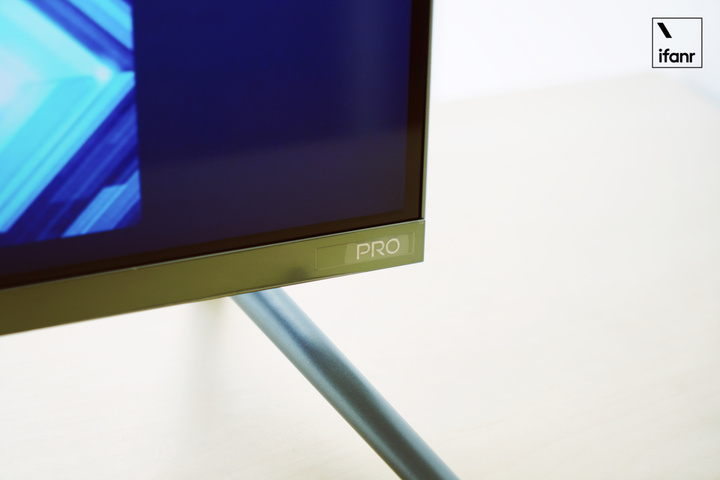
Obviously, if your TV cabinet is not long enough, don’t expect to put down this TV through the center support.
Connected to the power and turned on, there are still familiar advertisements. Xiaomi has not given special treatment to this top-end product. But the logic of shutting down has now become a tap to directly close the screen, long press will pop up the shutdown menu. This is very good, reducing the occurrence of advertising, the operating logic is still the same as the old TV.
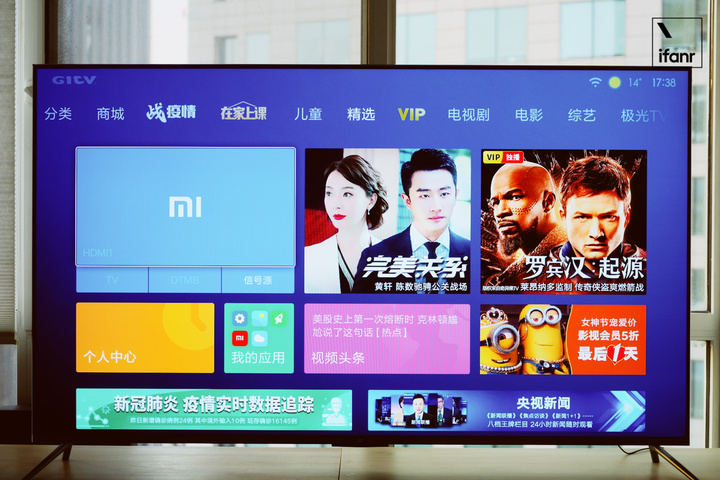 Although there are advertisements, Xiaomi TV’s PatchWall may be one of the best domestic TV operating systems. This set of logic and interface Xiaomi has been used for a long time, and now everyone looks similar, indicating that the Internet TV operating system is quite successful.
Although there are advertisements, Xiaomi TV’s PatchWall may be one of the best domestic TV operating systems. This set of logic and interface Xiaomi has been used for a long time, and now everyone looks similar, indicating that the Internet TV operating system is quite successful.
Xiaomi classmates and access to Mijia may be part of Xiaomi ’s unique experience. At present, there are not many brands that can make smart home ecology. Xiaomi is one of the best.
Press and hold the home button to enter the Mijia Control Center. At this time, you can use the TV as a large-screen control center. Whether it is watching the room through the camera, or turning on and off the device is easy. When someone rings the doorbell, the rice cooker will send a notification to the TV when the rice is cooked. At this time, the mobile phone notification may be missed by you.
Brighter and smoother, are the two major enhancements of Xiaomi TV 5 Pro
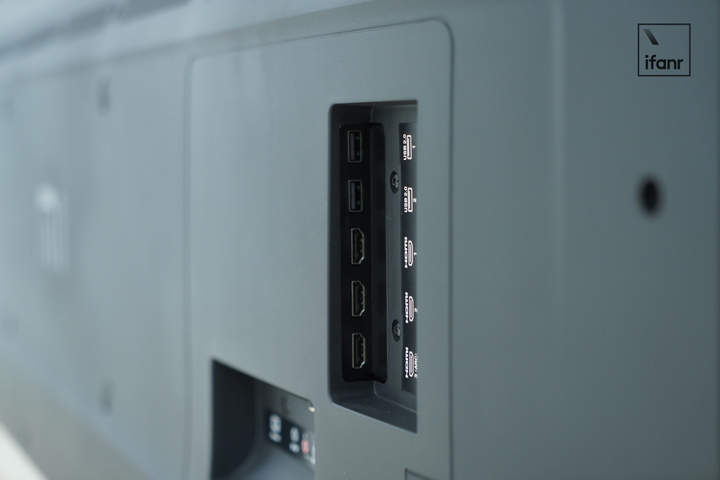
The 75-inch version of Xiaomi TV 5 Pro uses a 75-inch 4K quantum dot screen with a resolution of 3840 × 2160. The refresh rate is 60Hz, and there are 2 USB ports and 3 HDMI ports (including one ARC) behind it.
The processor configuration uses Amlogic T972, quad-core Cortex-A55 1.9GHz, 4GB + 64GB storage.
In terms of panel and function, the improvement of Xiaomi TV 5 Pro is mainly reflected in two aspects. The first is the application of quantum dot technology can greatly improve the color gamut performance, which is reflected in the digital color gamut of Xiaomi TV 5. It is 85% NTSC, and the color gamut of Xiaomi TV 5 Pro is 108% NTSC.

The color gamut has been improved, and the color displayed in the entire screen will be much richer. The most intuitive feeling is that the color will be more beautiful. Whether you watch the built-in online movie or the app such as Douyu Live, you will have obvious feeling . If you have n’t changed your TV for a long time, you may not be comfortable with this high color gamut picture at first glance, but you will feel that the color of the old TV is too faint after getting used to it.
The second more important improvement is the MEMC function, which is the support for dynamic compensation. Xiaomi TV has not been equipped with the MEMC function before, and this has also been criticized by many mid-to-high-end users on social networks.

For the function of MEMC, I said in “How to see a movie with 24 frames and 60 frames” , MEMC is shorthand , The original word was Motion Estimate and Motion Compensation, which means motion estimation and motion compensation.
In short, MEMC is to make the picture smoother by inserting frames after estimating the motion of objects in the picture.
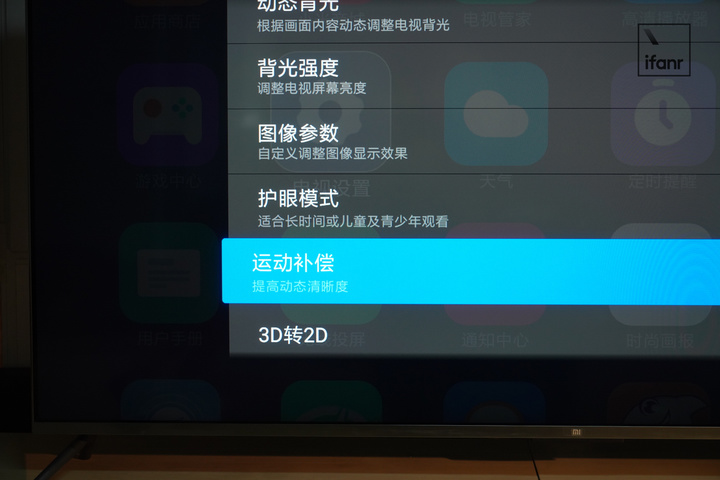
Xiaomi TV 5 Pro finally also has the function of motion compensation. This function can be selected in the image settings to close or low, medium and high gears, but the official performance of these three gears is not given. The difference. In addition, there are shortcut menus on the video playback interface.
But in actual use, I found that these two switches in different positions seem to conflict. Sometimes the shortcut switch seems to have no effect. I do n’t know if it is a software bug or a priority setting. It is not completely clear.
From the actual results, Xiaomi’s first time using MEMC is not bad. It is recommended to use it, but it is not expected to be too high. There is still a gap between Sony and a brand that has been cultivated for decades. The specific manifestation is that the smooth frame insertion is not perfect, and occasionally it will fail for a moment.
There are also compromises for slimness

In order to be as thin as 10.9mm, Xiaomi TV 5 Pro still uses side-entry backlight across the line. Compared to direct-type backlight, the side-entry structure is more compact, but it is more difficult to do multi-zone light control.
Divisional light control will directly affect the black-field performance of the TV, which will cause the loss of contrast and HDR will not achieve the best display effect.
Xiaomi TV 5 Pro has passed the HDR10 + certification. It has got rid of the embarrassment of “processor only support” before, but the full screen brightness of 400nits is still not very high. Obviously, in order to be thin, the intensity of the backlight should be intentional. Out of control.
Because the design language of the 75-inch version is the same as that of the other sizes of the Xiaomi Mi 5 Pro, there is not much that can be said separately. It can even be said that the design is not a unique selling point. . In addition, you can distinguish between Xiaomi TV 5 and Xiaomi TV 5 Pro. You can see if there is a “Pro” logo in the lower right corner.
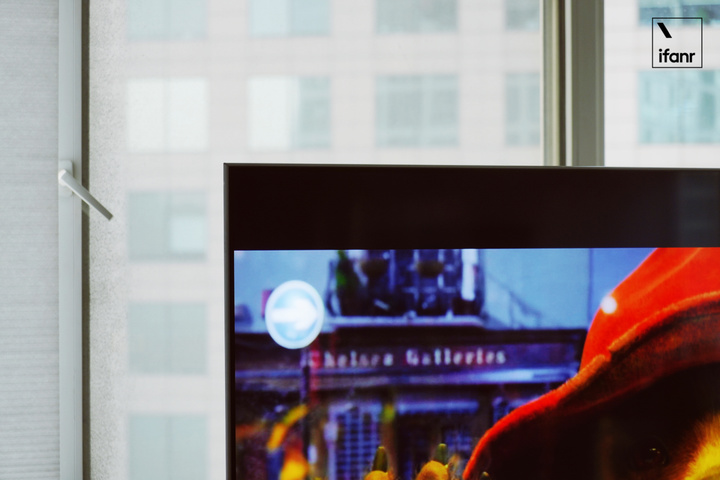
The full screen has become the core design language of Xiaomi TV. The more high-end Xiaomi is on TV, the narrower the frame and the thinner the body.
In terms of numbers, the 75-inch Xiaomi Mi TV 5 Pro has a screen ratio of 97%, which may be the product with the highest Xiaomi screen ratio. It is not the first time that Xiaomi has driven a high-end image through design.
But the design is the biggest part that directly affects this TV. In order to be slimmer, the Xiaomi TV 5 Pro series obviously also compromised something. It’s like you can’t ask a mobile phone to plug in a large 5000mAh battery in a slim and lightweight case.
Slimer design and better contrast performance, this is also a classic trade-off problem at present. Whether the quality of the design is worth the trade is not worth it. This is not a question that can be answered at one go. Individual needs and environmental arrangements in the home.
At this price, you need to strengthen your strengths and avoid your weaknesses
When buying a TV, clear self-recognition is the most important. If you have a NAS, there are a lot of Blu-ray original files stored in it, and you like to watch high-bit-rate HDR Video, or heavy next-gen console players, it is certainly true that the pursuit of more extreme picture quality.
Since absolute picture quality is where overseas brands have an advantage, does Xiaomi TV 5 Pro have its own advantages, of course?

Internet TV is naturally on the Internet. To be more precise, it is a huge ecosystem composed of the content entry of the TV system and the entire Internet TV content accessed.
Before writing this content, I was a bit skeptical of my unconscious heartwashing, so I did a search on Weibo and found that some users did not recommend Sony and Samsung. I just feel that Xiaomi’s TV system is better to use and richer in content (I have used brands such as Samsung and Sony).
Maybe you want to say that using a TV box is also very convenient, but just adding a box will increase the difficulty of operation for the middle-aged and the elderly exponentially. So far, I haven’t learned how to operate while watching TV, let alone the TV set system and the TV’s system on the two remote controls.
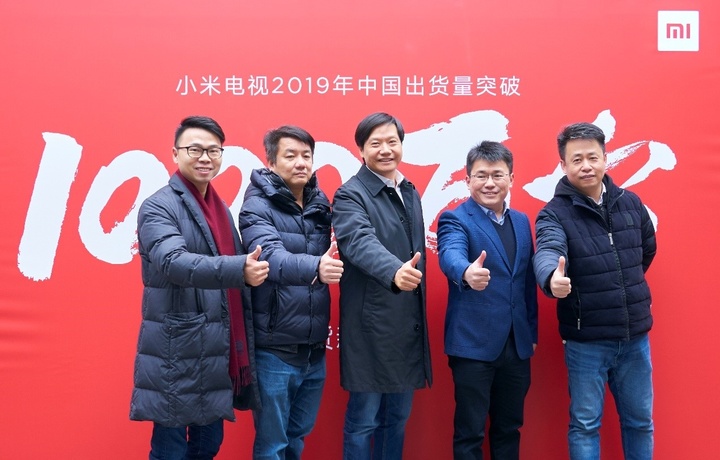
It is true that in the accumulation and pursuit of picture quality technology, Japanese brands will undoubtedly have a deeper sedimentation than domestic TVs, and domestic domestic TV brands are more sedimentary than emerging Internet brands. This is the result of the historical development process. The Internet TV wants to be a fat man at a stretch, whether it is Xiaomi or Huawei, it can’t be done.
Then why Xiaomi has become the TV brand with the most shipments in the past year, the answer is to use its best skills in the areas it is familiar with. For Xiaomi, the price is undoubtedly the most lethal killer.
First, use the price to monopolize the low-end market, gradually integrate stronger supply chain technology, and impact the high-end at the right time. This is the practice of Xiaomi mobile phones and Xiaomi TV.

According to the data report from January-June of 2019 of Aoweiyun.com, there are several keywords in the growth of TV industry’s attention in 2019.
The first keyword is “OLED”, which has gained 26.74% of the attention of different types of TV products.
The second keyword is “expensive”. The attention of products above 10,000 yuan has increased significantly. The attention of products from 6,000 to 10,000 yuan is 11.87%. Products above 10,000 yuan also occupy more than 11%. Attention.
The last key word is “big”. In the report, the attention of 65-inch TVs reached 22.84%, while 70-inch and above lags behind 55-inches, but achieved the third result, a 65-inch discount. Gui also gives the industry confidence in 70-inch and larger TVs.
But one problem that will always face higher prices is brand awareness. 5,000 yuan in the television field is a threshold, and around 10,000 yuan is a classic interval. Near this price, the advantage began to be controlled by overseas brands. The more the price went up, the more concentrated it was on a few brands such as Sharp, Sony, and Samsung.
It’s not the same as the mobile phone field. The classic models in the TV field have a much longer life cycle than the mobile phone. Of course, you can also say that the entire TV industry has a meaning of squeezing toothpaste. After all, TVs have tossed on LCD materials For a long time, even quantum dots were nothing new.

Squeezing toothpaste has a direct relationship with the slow development and application of new materials such as OLED, MiniLED, MicroLED on large-size panels. Until the large-scale replacement of materials, TVs will still maintain a relatively stable state. Overseas brands The advantages are difficult to change in a short time.
In an interview with Ichiro Takagi, senior executive vice president of Sony Group and president of Sony Home Entertainment and Audio Products, Sony revealed that Sony has won 50% of the market share in China’s OLED TV market and 25% over 75 inches. % Market share is quite powerful.
Finally, the price of the 75-inch Xiaomi Mi 5 Pro is 9999 yuan.
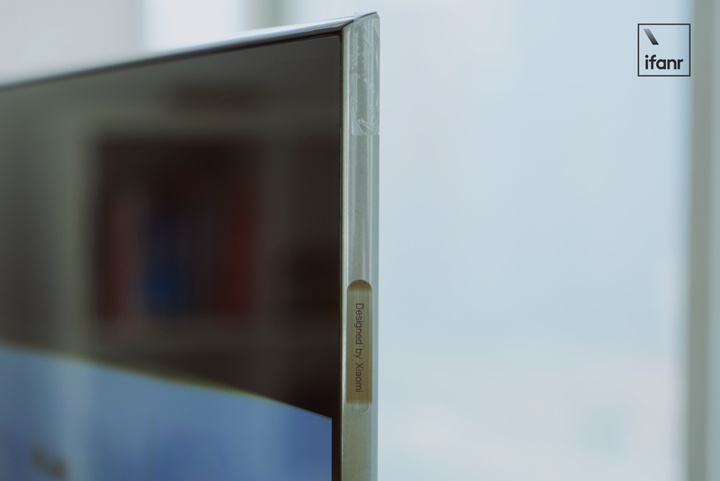
I can say that pure price is definitely not the most preferred. Some overseas brand classic models that are lowered after the promotion period will be more suitable.
At this time, the most direct factor in controlling TV sales has become the price. I believe Xiaomi must also reserve a certain amount of flexibility for this highest-end model. Some of its shortcomings, such as zone light control technology, are also behind. There will be larger and thicker models to make up gradually.
In the product line of Xiaomi TV, this product sold for 10,000 yuan is destined not to become the main force of shipment, but when the entire brand of Xiaomi starts to abandon the past price-performance ratio, the overall must still have a high-end impact Products, if this ultra-thin can impress users, of course, if the final user feels that absolute picture quality is more important, Xiaomi will definitely come up with a thicker but better picture quality product next time.
It depends on which direction is right.